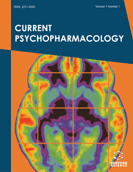Abstract
γ-Secretase was first identified as a protease that cleaves amyloid precursor protein (APP) and produces Aβ peptides, which are thought to be pathogenic in Alzheimers disease (AD). However, the physiological functions of this enzyme remain to be clarified. In the canonical Notch signaling pathway, ligands bind to the extracellular domain of Notch and trigger sequential proteolytic cleavage. Finally, the intracellular domain (ICD) of Notch is released from the cell membrane by γ-secretase and translocates to the nucleus where it modulates gene expression through binding to transcription factors. Thus, γ-secretase plays a central regulatory role in the Notch signaling pathway. Recently, it was demonstrated that many type 1 transmembrane proteins, including APP and Notch, are substrates for γ-secretase, and the ICDs of these substrates are released from the cell membrane by γ-secretase. These processes are very similar to those that occur in Notch signaling. Thus, the common enzyme, γ-secretase, modulates proteolysis and the turnover of possible signaling molecules, suggesting that mechanisms similar to Notch signaling may contribute widely to γ-secretaseregulated signaling pathways, including APP signaling which leads to AD. Indeed, we have shown that ICD of APP induces dynamic changes in gene expression and neuron-specific apoptosis. Our findings suggest that APP signaling responds to the onset of AD. Here, we focus on γ-secretase-regulated signaling hypothesis and discuss the possibility that APP signaling may be closely correlated with the onset of AD.
Keywords: Alzheimer's disease, amyloid precursor protein, apoptosis, intracellular domain, Notch signaling, γ-secretase, the regulated intramembrane proteolysis mechanism, transmembrane proteins, Caenorhabditis elegans, Drosophila, metalloproteinases, TGF-β/Activin, PROTEASOME, Gene Ontology, Aβ oligomer
Current Psychopharmacology
Title: γ-Secretase-Regulated Signaling: Notch, APP, and Alzheimers Disease
Volume: 1
Author(s): Kohzo Nakayama, Hisashi Nagase, Chang-Sung Koh and Takeshi Ohkawara
Affiliation:
Keywords: Alzheimer's disease, amyloid precursor protein, apoptosis, intracellular domain, Notch signaling, γ-secretase, the regulated intramembrane proteolysis mechanism, transmembrane proteins, Caenorhabditis elegans, Drosophila, metalloproteinases, TGF-β/Activin, PROTEASOME, Gene Ontology, Aβ oligomer
Abstract: γ-Secretase was first identified as a protease that cleaves amyloid precursor protein (APP) and produces Aβ peptides, which are thought to be pathogenic in Alzheimers disease (AD). However, the physiological functions of this enzyme remain to be clarified. In the canonical Notch signaling pathway, ligands bind to the extracellular domain of Notch and trigger sequential proteolytic cleavage. Finally, the intracellular domain (ICD) of Notch is released from the cell membrane by γ-secretase and translocates to the nucleus where it modulates gene expression through binding to transcription factors. Thus, γ-secretase plays a central regulatory role in the Notch signaling pathway. Recently, it was demonstrated that many type 1 transmembrane proteins, including APP and Notch, are substrates for γ-secretase, and the ICDs of these substrates are released from the cell membrane by γ-secretase. These processes are very similar to those that occur in Notch signaling. Thus, the common enzyme, γ-secretase, modulates proteolysis and the turnover of possible signaling molecules, suggesting that mechanisms similar to Notch signaling may contribute widely to γ-secretaseregulated signaling pathways, including APP signaling which leads to AD. Indeed, we have shown that ICD of APP induces dynamic changes in gene expression and neuron-specific apoptosis. Our findings suggest that APP signaling responds to the onset of AD. Here, we focus on γ-secretase-regulated signaling hypothesis and discuss the possibility that APP signaling may be closely correlated with the onset of AD.
Export Options
About this article
Cite this article as:
Nakayama Kohzo, Nagase Hisashi, Koh Chang-Sung and Ohkawara Takeshi, γ-Secretase-Regulated Signaling: Notch, APP, and Alzheimers Disease, Current Psychopharmacology 2012; 1 (2) . https://dx.doi.org/10.2174/2211556011201020155
| DOI https://dx.doi.org/10.2174/2211556011201020155 |
Print ISSN 2211-5560 |
| Publisher Name Bentham Science Publisher |
Online ISSN 2211-5579 |
 8
8
- Author Guidelines
- Bentham Author Support Services (BASS)
- Graphical Abstracts
- Fabricating and Stating False Information
- Research Misconduct
- Post Publication Discussions and Corrections
- Publishing Ethics and Rectitude
- Increase Visibility of Your Article
- Archiving Policies
- Peer Review Workflow
- Order Your Article Before Print
- Promote Your Article
- Manuscript Transfer Facility
- Editorial Policies
- Allegations from Whistleblowers
- Announcements
Related Articles
-
Pyrrolo-isoxazole: A Key Molecule with Diverse Biological Actions
Mini-Reviews in Medicinal Chemistry HIV-1 Induced CNS Dysfunction: Current Overview and Research Priorities
Current HIV Research Recent Updates on Development of Drug Molecules for Human African Trypanosomiasis
Current Topics in Medicinal Chemistry Treatment of Viral Encephalitis
Central Nervous System Agents in Medicinal Chemistry Visual and Quantitative Assessment of COVID-19 Pneumonia on Chest CT: The Relationship with Disease Severity and Clinical Findings
Current Medical Imaging Inhibitory Mechanism of An Anticancer Drug, Bexarotene Against Amyloid β Peptide Aggregation: Repurposing Via Neuroinformatics Approach
Current Pharmaceutical Design Possible Use of Autologous Stem Cell Therapies for Alzheimers Disease
Current Alzheimer Research Biomarkers for Alzheimer's Disease Diagnosis
Current Alzheimer Research Imaging the Earliest Stages of Alzheimers Disease
Current Alzheimer Research The Role of microRNAs in the Development of Type 2 Diabetes Complications
Current Pharmaceutical Design Gene-environment Interactions in Late Life: Linking Psychosocial Stress with Brain Aging
Current Neuropharmacology The Role of Advanced Technologies Supplemented with Traditional Methods in Pharmacovigilance Sciences
Recent Patents on Biotechnology Ages of Onset of Mood and Anxiety Disorders in Fragile X Premutation Carriers
Current Psychiatry Reviews Circadian Rhythm in Cytokines Administration
Mini-Reviews in Medicinal Chemistry Adrenergic Drugs Blockers or Enhancers for Cognitive Decline ? What to Choose for Alzheimer’s Disease Patients?
CNS & Neurological Disorders - Drug Targets Clinical and Therapeutic Challenges when Psychiatric Disorders Occur in Neurological Diseases: A Narrative Review
Current Psychiatry Research and Reviews Meet Our Editorial Board Member
Current Aging Science The Updated Role of Oxidative Stress in Subarachnoid Hemorrhage
Current Drug Delivery Anti-TNF Treatment in Rheumatoid Arthritis
Current Pharmaceutical Design Catatonia, Malignant Catatonia, and Neuroleptic Malignant Syndrome
Current Psychiatry Reviews


























